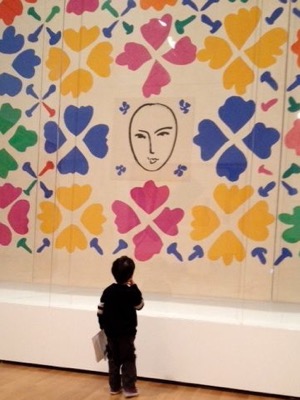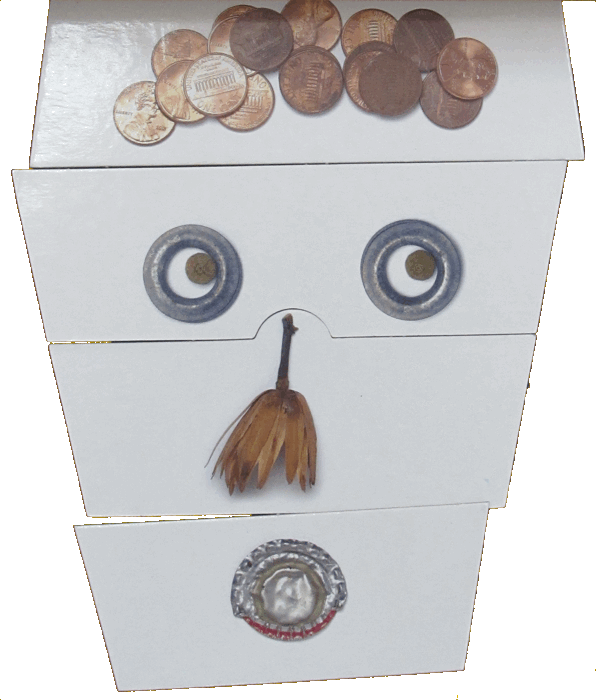
As we prepared for our class to get to know each other at the beginning of the year, we offered the children disguises as a playful way to introduce themselves. As teachers, we had no idea that our "ice breaker" would lead to investigations about "Who We Are" for the next six months. The children were challenged by having to identify the child behind the "funny face." They used many different techniques for identification: looking at specific facial features ("It must be Sienna, because of the hair."); process of elimination ("It can't be Miles. We already did Miles."); and making connections ("I have the same [disguise] as Sienna.").
 We noticed who makes connections between their disguise and another child's, and if they matched shapes of hair, eye color, as well as other features. In addition, we noted who understood that some children had already been eliminated and therefore could not be contestants. We observed what they remembered about each other as well as their general knowledge of the world (e.g. their understanding of camouflage.)
We noticed who makes connections between their disguise and another child's, and if they matched shapes of hair, eye color, as well as other features. In addition, we noted who understood that some children had already been eliminated and therefore could not be contestants. We observed what they remembered about each other as well as their general knowledge of the world (e.g. their understanding of camouflage.)
As teachers, what he noticed and documented informed our work with the children over the last six months, which included disguises for the children to use in front of the mirror, looking at a funny face book that presented different parts of the face that could be flipped and rearranged, and using found and recycled materials to create their own original funny faces.
To take their thinking to the next level, the teachers created blank templates which mimic the Funny Face gam and provided the children with various materials to create their own funny faces.
The children's work on this project helped us understand them better. We noted their knowledge of faces (where do eyes, nose, mouth go), as well as their style of learning. Some children insisted on round objects to represent the eyes, while others were more open to different options. Some children selected one material for a facial feature and would not change it, while others tried out several items before settling on a selection. We also noticed who saw the creative potential in the materials (Clarkson: "It's a window into the brain."). In addition, we learned about their fine motor ability as they manipulated and secured the materials to the board.
With their background in creating faces using various 3-dimensional materials, the children are now ready to make 2-dimensional self-portraits. After that project, we will merge the children's strong interest in cutting and faces to create portraits combining both line and collage. It is amazing how the welcome board became and important part of our classroom and has taken on a life of its own. It has helped us get to know each other better and provided a strong social/emotional piece to the classroom in addition to the important cognitive concepts conveyed.